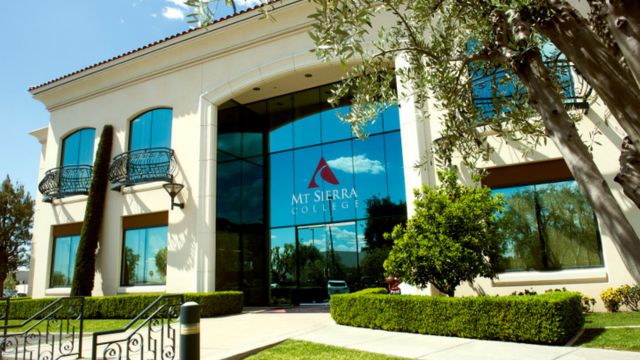California offers numerous opportunities, boasting a diverse population, a thriving economy, and a rich cultural tapestry. However, not all educational institutions in California merit consideration. Some colleges exhibit subpar academic standards, exorbitant tuition fees, unfavorable student results, and questionable standing. In this blog, we will delve into the least favorable college in California, as indicated by the latest available data and reviews: Mt. Sierra College.
Introduction to Mt. Sierra College:
Mt. Sierra College, situated in Monrovia, California, is a privately owned for-profit institution founded in 1990. It purports to provide degree programs and certifications in media arts, business, and technology. The college claims to deliver “high-quality education that equips students for success in the global job market” and highlights its “faculty composed of industry experts who bring real-world experience to the classroom.”
Nonetheless, these assertions diverge significantly from reality. Mt. Sierra College ranks unfavorably as one of the weakest colleges in the United States according to numerous sources, including Money Inc, Academicful, and The College Scorecard. The institution records a dismal graduation rate of merely 9%, a troubling 18% default rate on student loans, and a median post-graduation salary of just $24,800. Moreover, student satisfaction levels are disappointingly low, evident from numerous negative reviews on platforms like Yelp, Niche, and GradReports.
Challenges Associated with Mt. Sierra College:
There exist several critical concerns with Mt. Sierra College that dissuade prospective students from considering it as a viable option:
- Substandard Education: Mt. Sierra College offers programs in specialized fields like graphic design, computer science, business administration, and network communications. However, students often voice dissatisfaction with the outdated, irrelevant course content, inadequate teaching methods, and inconsistent grading. The college is further hampered by a dearth of qualified faculty, insufficient equipment, facilities, and the absence of essential accreditation.
- Excessive Tuition Costs: The college imposes exorbitant tuition fees of $14,400 per annum for full-time students, more than double the national average for private for-profit institutions. Additionally, students must contend with supplementary expenses for books, supplies, transportation, and other incidentals. Consequently, many students resort to loans to fund their education, grappling with repayment challenges due to limited income and high interest rates.
- Underwhelming Student Outcomes: Contrary to its promise, Mt. Sierra College falls short in preparing students for success in the global job market. The institution reports an alarming 9% graduation rate, implying that only 9 out of 100 enrollees complete their programs within six years. Furthermore, the college records a meager 29% placement rate, indicating that a mere 29 out of 100 graduates secure employment or pursue further education within a year of graduating. Graduates’ median salaries are similarly disappointing, languishing at less than half the national average for bachelor’s degree holders.
- Dubious Reputation: Mt. Sierra College grapples with a tarnished reputation among employers, educators, and students alike. The institution lacks accreditation from recognized regional or national accrediting bodies, rendering its degrees and certifications unacknowledged by most employers and other higher education institutions. The college has also faced legal issues and scandals, including lawsuits from former students alleging fraud and misrepresentation, Department of Education investigations for financial aid improprieties, and probation by the Bureau for Private Postsecondary Education for failure to meet minimum standards.
How to Avoid Mt. Sierra College:
Prospective students can circumvent the pitfalls associated with Mt. Sierra College through the following steps:
- In-Depth Research: Prior to selecting a college, prospective students should conduct comprehensive research. They should scrutinize official data from the Department of Education, consult reputable independent rankings, and explore reviews from current students, alumni, and other sources to evaluate institutions based on academic quality, tuition costs, student outcomes, and reputation.
- Explore Alternatives: Prospective students should explore alternative educational options that offer superior value. This might involve considering public colleges or universities in California with lower tuition fees, higher graduation rates, better job placement, and higher post-graduation median salaries. Community colleges that provide transferable associate degrees or certificates and online institutions offering flexible, cost-effective programs are also worth exploring.
- Seek Guidance: Seeking guidance from high school counselors, college advisors, financial aid experts, and career counselors can provide valuable insights and advice in choosing or transferring to a different institution. Engaging with mentors, peers, friends, and family members who can share experiences and perspectives is equally beneficial. Online resources, such as websites, forums, blogs, and podcasts, can offer additional guidance, tips, and recommendations.
In Conclusion:
Mt. Sierra College stands out as a subpar choice for higher education in California due to its inadequate educational quality, high tuition fees, unsatisfactory student outcomes, and questionable reputation. Prospective students are encouraged to steer clear of this institution or transfer out if already enrolled. Thorough research, exploration of alternative options, and seeking assistance can help them identify a college better suited to their educational needs and career goals.

